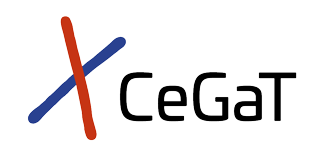Johannesen K1, Marini C1, Pfeffer S1, Møller RS1, Dorn T1, Niturad CE1, Gardella E1, Weber Y1, Søndergård M1, Hjalgrim H1, Nikanorova M1, Becker F1, Larsen LH1, Dahl HA1, Maier O1, Mei D1, Biskup S1, Klein KM1, Reif PS1, Rosenow F1, Elias AF1, Hudson C1, Helbig KL1, Schubert-Bast S1, Scordo MR1, Craiu D1, Djémié T1, Hoffman-Zacharska D1, Caglayan H1, Helbig I1, Serratosa J1, Striano P1, De Jonghe P1, Weckhuysen S1, Suls A1, Muru K1, Talvik I1, Talvik T1, Muhle H1, Borggraefe I1, Rost I1, Guerrini R1, Lerche H1, Lemke JR2, Rubboli G2, Maljevic S1.
Abstract
Objective:
To delineate phenotypic heterogeneity, we describe the clinical features of a cohort of patients with GABRA1 gene mutations.
Methods:
Patients with GABRA1 mutations were ascertained through an international collaboration. Clinical, EEG, and genetic data were collected. Functional analysis of 4 selected mutations was performed using the Xenopus laevis oocyte expression system.
Results:
The study included 16 novel probands and 3 additional family members with a disease-causing mutation in the GABRA1 gene. The phenotypic spectrum varied from unspecified epilepsy (1), juvenile myoclonic epilepsy (2), photosensitive idiopathic generalized epilepsy (1), and generalized epilepsy with febrile seizures plus (1) to severe epileptic encephalopathies (11). In the epileptic encephalopathy group, the patients had seizures beginning between the first day of life and 15 months, with a mean of 7 months. Predominant seizure types in all patients were tonic-clonic in 9 participants (56%) and myoclonic seizures in 5 (31%). EEG showed a generalized photoparoxysmal response in 6 patients (37%). Four selected mutations studied functionally revealed a loss of function, without a clear genotype-phenotype correlation.
Conclusions:
GABRA1 mutations make a significant contribution to the genetic etiology of both benign and severe epilepsy syndromes. Myoclonic and tonic-clonic seizures with pathologic response to photic stimulation are common and shared features in both mild and severe phenotypes.
- Authors’ affiliations are listed at the end of the article.
- Authors’ affiliations are listed at the end of the article. johannes.lemke@medizin.uni-leipzig.de guru@filadelfia.dk.
